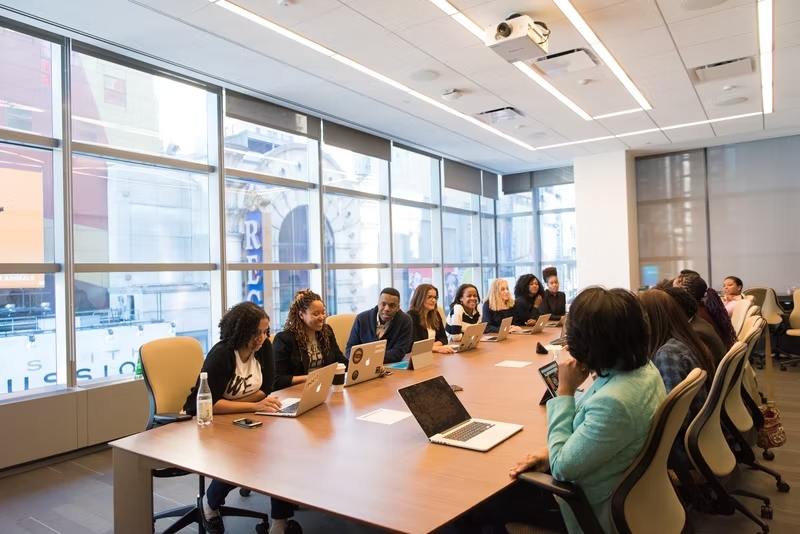Learning and development are crucial in creating a high performing team. Everyone processes information differently and it’s no different when we learn. With no two people the same, and during Adult Learners Week, it’s important to acknowledge the different employee learning styles of employees in your team. By tailoring the delivery of content for different styles of learning, your employees will be more engaged with the new content at hand, resulting in a more productive learning session.
Why should you tailor your training at work?
When you effectively train your team specific to their preferred style of learning, they’ll be more engaged in the learning process. By knowing the learning style of your employees, you can play to their strengths and allow them to learn in a way which is easily digestible for them. This means that they’ll be on their way to actioning what they’ve learned in no time at all.
There are four main types of learning styles, but many people overlap with two or even three styles. The different styles of learning are based on the VARK method.
The VARK method includes visual, auditory, read/ write and kinaesthetic learning styles.
What are the different employee learning styles?
Visual Learning
Visual learners understand tasks and content by watching something prior to trying it themselves. They respond well to visual stimulation and learning materials, using visual elements they’ve seen to recall information. In the workplace, this could involve a demonstration of a task, such as watching how to use a cash register and then trying it themselves.
The characteristics of visual learners:
-
They are often creative and can easily visualise complex situations
-
Visual learners find using graphs, mind maps, flashcards and flow charts helpful
-
Visual learners find taking notes a helpful way to retain information
-
Visual learners can be distracted by aesthetically pleasing or visual environments
Examples of visual learning strategies include:
-
Instructional videos
-
Photographs
-
Diagrams, flowcharts and flashcards
-
Timelines
-
Highlighting notes and key information
-
Colour coded notes and learning material to create visual stimulation
Audible Learning
Audible learners understand information when it is explained in a step-by-step format. They learn best when instructions are given and active conversations around the content are had. Not only this, but they learn best when they talk things through with others or actively listen to others speaking either through a lecture, discussion, or presentation.
The characteristics of audible learners:
-
Respond well to verbal instructions and find them easy to follow
-
Gain an understanding of the task at hand by talking it through
-
Speak well and are often good at presenting
-
Find it difficult to concentrate when there is distracting sound in the background
Examples of audible learning include:
-
Lectures
-
Audio recordings
-
Group discussions
-
One on one meetings
Reading and Write Learning
Read and write learners learn by reading content or instructions and then writing it out in their own words. They are well organised and avid note-takers, able to digest information when they write down and re-read the information.
The characteristics of reading and write learners:
-
Writes notes when reading through any learning materials
-
Enjoys reading and writing
-
Often uses lists and categories to organise their notes
Examples of reading and write learning include:
-
Reading learning material and writing notes
-
Ordering tasks or learnings into categories and levels of priority
-
Asking colleagues to read over notes and condense key information down to one page.
Kinaesthetic Learning
Kinaesthetic learners prefer a hands-on approach to learning and this involves using all five senses – touch, sight, smell, sound and taste. They learn effectively when they perform the task themselves and enjoy sessions that include group-based participation.
Kinaesthetic learners typically find it harder to learn when sitting through a lecture, however, learn more deeply when a hands-on task is involved. It’s important to break up long employee training sessions into smaller, more digestible components. To help maintain the focus of kinaesthetic learners, you should change the learning environment for each of these sessions by moving to different rooms or going outside.
The characteristics of kinaesthetic learners:
-
They find it hard to sit and learn in a traditional ‘classroom’ environment
-
Learns through movement
-
Likes to build things and is very hands-on
-
Becomes restless when sitting down
-
Physically coordinated and typically good at sports
Examples of using kinaesthetic learning:
-
Demonstrations
-
Simulations
-
In-person scenarios
By being aware of the different employee learning styles, you can create a training programme that is suitable for all members of your team, who are more engaged and well equipped for work.
How can you encourage employees to take part in a specific style of learning that’s suitable for them?
-
Let your team know that they have the option to learn based on their own learning style and that you will accommodate their needs.
-
Actively talk about the different learning styles in your workplace and provide some information about the options available.
-
Ask your employees which learning style they prefer. This could be in the form of a survey or 1-1 meeting.









